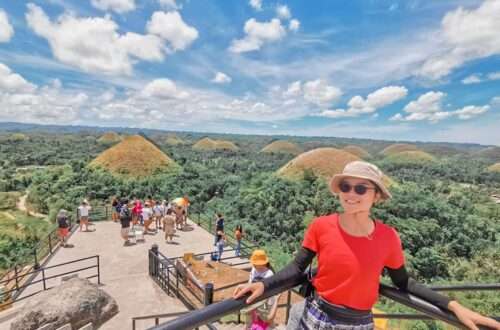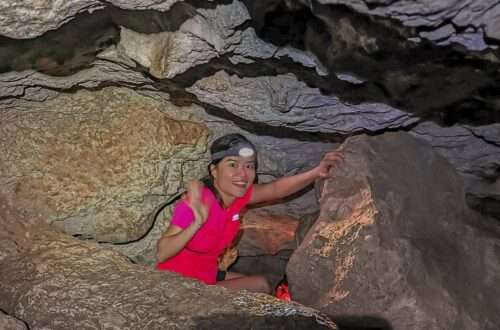
Everything about Cebu City
Cebu City, where most travellers visit Cebu Island lands, is a transit place for me to branch off to the rest of the island.
As with any other major city flooded with people, it is crowded, there are beggars, and pollution is prevalent.
Travel to the outskirts, and things turned better with cleaner roads, office skyscrapers, and modern apartments.
Despite the negativities listed above, Cebu City is a convenient place to find supermarkets, shop or generally pamper yourself in salons and eateries selling mouthwatering cuisine.
It also houses museums and churches about the history and lives of the people here.
Whatever the case is for you, this post contains recommended activities I did, and what you could do to spend your valuable time here in Cebu City.

I visited Cebu in April 2024. This post contains affiliate links that cost nothing to you but support my blog! It may also be updated periodically. Cheers!
Best Time to Visit Cebu City
As mentioned in my overarching post on travelling to Cebu as a first-timer, the weather in the Queen of the South is static with just two seasons: a very hot and dry period, and an equally hot but wet period.
If you’re coming from Singapore or Malaysia or generally anywhere in Southeast Asia, the temperature and humidity are somewhat similar, hovering between 26°C – 34°C. What’s different for me – a resident of Singapore – is the dust and pollution from the traffic, and burning of foliage at dusk, at least in the countryside.
Jan to May are the dry months. I visited in April, and there was no rain for the entire week. It was just hot and dusty. Get proper sun protection or you’ll risk getting sunburnt.
Jun to Dec tends to be wetter with higher rainfall, but everything else remains pretty much the same.
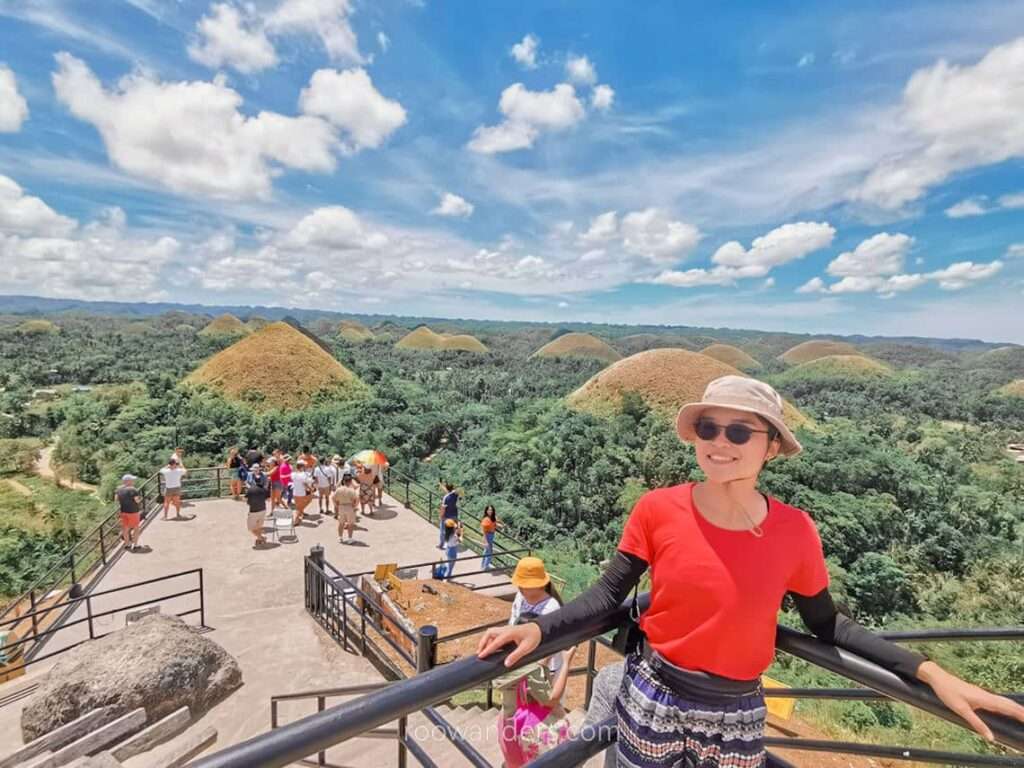
Getting to Cebu City
You could travel to Cebu City via flight or ferry from other islands or internationally. More about this, including visa and administrative matters, here.
Cebu City is the transit point for travels throughout the entire island. The north-bound and south-bound buses at the respective bus terminals and ferries to Bohol or other islands at the pier are always packed with travellers during our visit.
During our week-long travels, we transit at Cebu City thrice to Malapascua (for the thresher sharks), Bohol (for the chocolate hills and tarsiers), and Moalboal (for the sardine runs and Kawasan canyoneering).
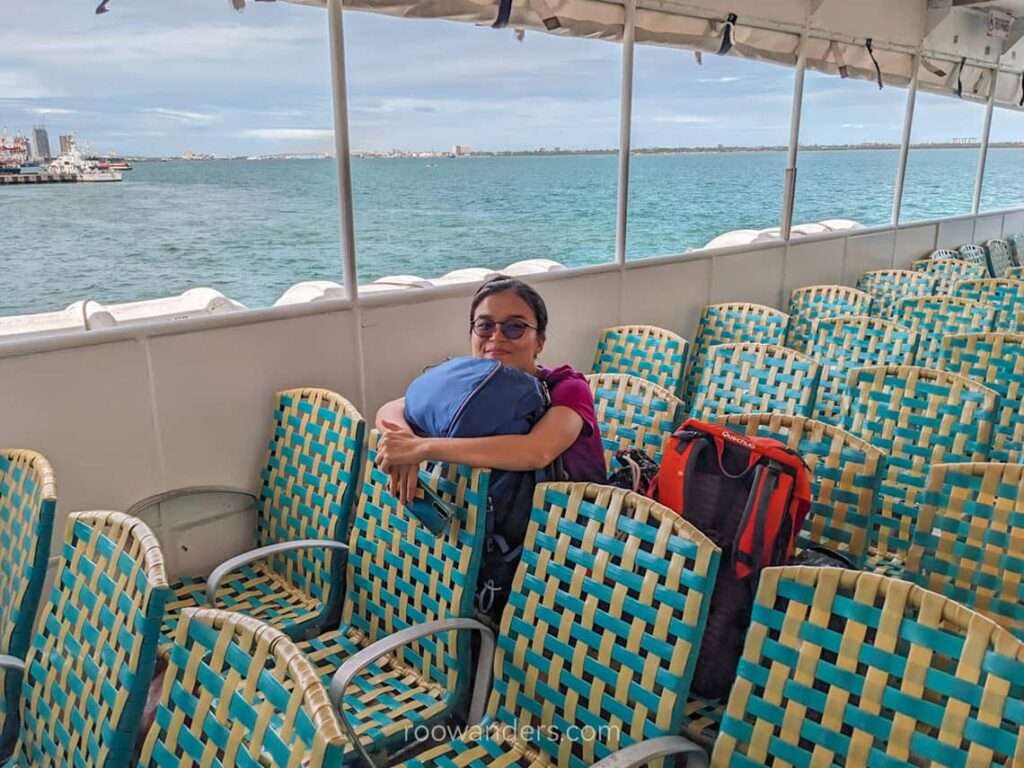
Travelling within Cebu City
We stayed within the heart of Cebu City, with the south bus terminal, the pier, and most attractions within a km of walking.
For places that are too far to walk, or when the weather is too punishing to walk, we call for Grab, a prevalent ride-hailing service in Southeast Asia. Other ride-hailing apps in Cebu City include Angkas and Joyride. Solo travellers would find the motor rides pocket-friendly.
We saw several jeepneys in Cebu City but didn’t hop onto any of those since our time in Cebu City was limited. Jeepneys are another affordable means to get around Cebu City.
For those looking to save money exiting the airport, there’s the MyBus service. We initially wanted to take this to North Bus Terminal from the airport for P50, but their services only started at 7 AM, when we were already at the airport at 5.30 AM.

Attractions & Activities
Within Cebu City
Basilica Minore del Santo Niño de Cebu
Founded in 1565, Basilica Minore del Santo Niño is the oldest catholic church in Cebu, and possibly the Philippines. The church traces back its history to the time of Ferdinand Magellan – a Portuguese explorer who completed the first circumnavigation of Earth.
Digression, some say San Agustin Church within Intramuros in Manila, built between 1587 and 1606, is the oldest in the Philippines. But that’s still about two decades later than Basilica Minore del Santo Niño. Since Cebu is where the Spanish first set foot, I’m more inclined to think of this church in Cebu as the oldest in the Philippines.
Magellan gave an image of the infant Jesus to one of the chieftains’ wives, and that image has been kept in the church since its inception by Spanish explorer/ coloniser Miguel López de Legazpi. The statue miraculously survived the erosion of time and all the raging fires likely caused by forgotten candles.
We happened to visit the church on a Sunday morning and had the opportunity to witness the all-day outdoor masses. Seas of pilgrims intermingled with the flower and water sellers in and around the church. Loudspeakers hum hymns above our heads. The street outside the church was also closed for this special day of the week. In short, the area was packed with people!



Magellan’s Cross
The Magellan’s Cross, located adjacent to Basilica Minore del Santo Niño, symbolises the first time Catholicism found its way to the Philippines.
There are many stories surrounding the cross.
Some state that Magellan was the one who erected the wooden cross on 14 April 1521 to commemorate the occasion of baptising the then chieftain of Cebu and his wife.
There are also stories speculating that the true cross lies protected within the one we see now, and also how the original cross had been stolen or destroyed following the aftermath of the Battle at Mactan, and what’s left is a replica.

Fort San Pedro
Located three streets away from Basilica Minore del Santo Niño, Fort San Pedro was built by Legazpi, some four decades after Megellan’s arrival, and at the same time as the construction of the Basilica.
Apart from being a Spanish-built fortress, the fort had served as a prison camp and was a city zoo, before its eventual status as a relic of Cebu with partially ruined structures and a small museum.
The triangular fort is also the oldest and smallest fort in the Philippines.
Tickets cost P30 per person for both locals and tourists. The Fort is open everyday from 8 AM till 5 PM.
I did not visit the Fort, however, as it looks smallish, and the reviews don’t feel enticing to me – not a history buff! Someone commented that all it takes is 30 minutes. Besides, we had enough of walking under the afternoon sun. Schedule your visit to the Fort after 4 PM, just before the closing time, to ward off the punishing heat.

Heritage of Cebu Monument
The Heritage of Cebu Monument sandwiched between Sikatuna Street and Mabini Street, is within close walking proximity to the following attractions we’d be going through later.
Designed by a local artist, Eduardo Castrillo, it depicts the historical scenes of Cebu, from the time of Rajah Humabon and Magellan to the beatification of Pedro Calungsod, a Cebuano martyr.

Yap-San Diego Ancestral House
The Yap-San Diego Ancestral House is claimed to be one of the oldest houses in the Philippines built with Chinese influence outside of China in 1675.
It came from the marriage of a wealthy Chinese merchant Don Juan Yap and his wife Doña Maria Florido. Together, they had three children. Their eldest daughter married Parian Cabeza de barangay, Don Mariano San Diego, and inherited the house. Hence the name Yap-San Diego.
Several generations later, the house was inherited by one of Doña Maria’s descendants, who, as an art collector, decided to open his ancestral place as a museum for public visits.
Yap-San Diego House has a mix of Chinese, Spanish and Catholic influence in its architectural design and interior furniture.
Tickets cost P100. The place is open from 9 AM till 7 PM everyday. This is the place to be for those interested in antiques and the lives of the people in the past, just like the Blue Mansion in Penang.

Casa Gorordo Museum
Similar to Yap-San Diego Ancestral House, Casa Gorordo is a house museum built in the typical style of a Filipino home in the 19th century. Unlike the former, this house has been bought over by an organisation and elevated to the status of a museum.
It was said that the house was initially built by another person, and was bought over by a man named Juan Isidro Gorordo, whose family later became one of the wealthiest clans in the city.
One of the man’s descendants became the first Filipino Archbishop of Cebu, Juan Gorordo.
Tickets cost P150 and come with a guided tour. The museum is open everyday from 9 AM to 5 PM.

1730 Jesuit House
As with the first two houses before, the 1730 Jesuit House is also a house museum built in the – as its name suggests – 1730.
It is a non-descript house museum hidden from the street by a wall and an opaque gate that reminded more of a warehouse than a house or museum.
The son of the person who purchased the property was a student of Jesuit studies. He and his family later opened their property for visits, upon his valuable discovery while sifting through books for his research. You can read more about his accidental revelation in an informative article here.
Tickets cost P100, and the place is open everyday from 8 AM to 5 PM.

Colon Night Market
If you’re staying around the vicinity of Colon where the attractions mentioned are, then hop over to Colon Night Market to get a feel of what a night market in Cebu is like.
This night market sells more apparel – mainly shoes – than food. Mostly cheap shoes and trinkets. Still, it makes for a great activity to kill some time at night.
If it’s food you seek, get a Grab or drive yourself over to Sugbo Mercado, located some 5 km north of Colon Night Market.

Cebu Taoist Temple
Apart from the Basilica, Magellan’s Cross, Fort San Pedro and one of the house museums mentioned above, many tours include the Cebu Taoist Temple in their itinerary.
Located on a hill about 300 m above sea level in the Lahug neighbourhood of Cebu, the Taoist temple was built by Cebu’s Chinese community in the 1970s to remember their roots and continue their beliefs.
Unlike Buddhist temples, Taoist temples feature all sorts of gods and deities. They are usually the most ornate and decorated temples. Taoism was founded by a man in China called Lao Tzu. Whereas Buddhism originated from the Buddha in the Indian subcontinent. You can google more about Taoism since this is another huge topic to squirrel into.
Getting to the Taoist Temple from the centre of Cebu City can be tricky if you do not have your own transport. Save yourself from the hassle of planning with a private chauffeur or a guided tour around Cebu City for half a day or more.

Outskirts of Cebu City
Beach lounging at Mactan
Mactan, an island located a few kilometres from Cebu island separated by the Mactan Channel, has beautiful beaches to boot.
That’s what most sites would say.
But the best stretches are privately owned by resorts – since they have the resources to maintain them.
Nevertheless, travellers can still get a taste of the shoreline no matter their options – from luxurious Dusit Thani Mactan to budget-friendly local ones.
Then there’s also the choice of public beaches, of which most, if not all, require a small fee. From the looks of it, past reviews have lamented the state of the beaches – devastation by typhoon Odette, or taken advantage of by greedy locals.
Whatever remaining free-entry beaches are mostly made of rocks and pebbles, rather than white powdery sand.
Otherwise, get a Day Pass to use the resort facilities in Dusit Thani and enjoy their beach without splurging on their hotel rooms.

Scuba Diving/ Snorkeling from Mactan
Divers could enjoy the underwater world around Mactan.
Most dive sites are reachable under a 15-minute boat ride between the islands of Mactan and Olango. There are beginner-friendly shore dives and marine diversity-rich coral walls extending beyond 100 m!
Not a diver? You could still enjoy the marine life around Mactan by snorkelling around the area. Or sign up for a scuba experience package to decide if scuba diving is for you, or just dive right into an Open Waters Certificate at Mactan.

Water Activities at Mactan
What’s a beach destination without some water sports activities?
Apart from lounging by the beach or snorkelling/ scuba diving the day away, you could also enjoy a jot in adrenaline with banana boat rides, parasailing flights and wakeboarding.

Temple of Leah
Nicknamed the ‘Taj Mahal of Cebu’, the Temple of Leah, located some 12 km away from Cebu City centre, is a Roman-inspired shrine built by Teodorico Soriano Adarna in honour of his late wife, Leah Villa Albino-Adarna. The temple is relatively new, constructed in 2012.
The mausoleum of a husband’s undying love for his departed wife may sound romantic. However, according to a revelation from the granddaughter of the temple’s creator and muse, the temple was actually built to house her grandma’s items!
I find her story hilarious compared to the grandeur the tours and articles have painted about undying love and unwavering devotion. I suppose you could read it that way too – the husband’s ultimate love and devotion to his wife’s dying wishes of building a grand palace to house her stuff.
Tickets cost P150 per person, and the temple is open from 6 AM to 11 PM.
Getting a ride there may be difficult. You’d need a motor (parking fee is P50) or a chauffeur to make the return trip. Otherwise, go for a tour to skip this hassle of planning.
Little Kyoto
Sachiko’s Little Kyoto is a little mountainside attraction about 16 km north of Cebu City centre.
It’s a specially curated garden with Japanese-inspired torii gates, monuments, and a botanical garden. There’s also a cafe selling Japanese sweets and meals like tonkatsu ramen and green tea, though definitely with a touch of the taste of Cebuanos.
Still, Little Kyoto is a nice visit when you’re already up in the highlands, and makes for an excellent retreat from the dusty hot city streets.
Tickets cost P100, and the park is open from 8 AM to 8 PM. You could rent Japanese attire for photos!
Sirao Garden
Located 20 km north of Cebu City centre along the same road to Temple of Leah and Sachiko’s Little Tokyo, Sirao Garden is, unlike Little Kyoto, a Netherlands-inspired garden.
Aside from the plentiful flowers – not tulips but celosia – there are also mockup windmills, clogged shoes and giant hands for photo opportunities.
Tickets cost P100 per person, and the park is open from 8 AM till 5.30 PM.
If you find arranging your own transportation tough or think driving up the mountainous route is dangerous, consider joining a day tour to some of the landmarks in the highlands.
TOPS Cebu
The last notable attraction up in the mountains ought to be TOPS.
Tops is a park with eateries that was opened in 1985 to accommodate those who would like to enjoy the skyline of Cebu from a vantage point.
The place was closed for renovation previously but has since been rejuvenated with better amenities and eateries. It is also open 24 hours every day.
If heading to the mountains on a motor or a private car, parking starts from P50. Tickets cost P100 per person. For those who would only want to visit Tops, the management team has made transport easy with a P200 return bus ride, including the entrance fee, from IT Park Transport Terminal.
Their Facebook page is frequently updated with the latest promo, so check that out to see if you can snag any!
Places to eat in Cebu City
We did not spend more than 2 consecutive days in Cebu City, mostly using this place as a transit point for our international flights and transport to other parts of Cebu island.
Nonetheless, here are some tasty eateries we tried, or have bookmarked but couldn’t go to for your perusal!
House of Lechon
I’ve tried lechon in a buffet joint in Manila during my trip to the Ifugao, e.g. Batad, but this dish in House of Lechon is on another playing field. The skin was as crispy as the Peking Duck’s, while the flesh was tender and juicy.
Then again, lechon, the Filipino version of suckling pig, originates from Cebu!
House of Lechon sells the Carcar – a town south of Cebu City – version of Lechon.
We visited on a weekend during lunch hour, and the place was packed with locals having family lunch, and tourists clearing a foodie checklist! Time your visit well, or you’ll have to wait for your seats. Solo or couples get their seats faster, or you could reserve in advance.
Since we had a filling breakfast before the visit, we ordered the smallest portion of lechon for P310 to sample.

Noy’s Yellow Chicken
Delectable juicy yellow marinated chicken served with fragrant yellow Java rice. We heartily enjoyed our meal of chicken, rice and kangkong for P408.
Noy’s Yellow Chicken is at a corner of a busy road opposite Castle Peak Hotel. We discovered this eatery while searching for dinner options after a relaxing massage at Cheeva Spa. Both places are separated by a busy street.

Sugbo Mercado IT Park
Sugbo Mercado at IT Park has the biggest variety of food in Cebu. If travelling in a group and nobody knows what to get, head to this food market for endless food choices.
If you’re staying in Cebu City centre, it’ll take almost half an hour or 5.5 km to reach Sugbo Mercado by private hire.
La Fortuna
As we left the morning mass of Basilica Minore del Santo Niño, we found ourselves famished and walking into the shop of La Fortuna.
This Chinese-inspired bakery shop has many outlets around Cebu. We happened to walk into the store at Legaspi Street out of curiosity.
Apart from the Chinese bakes and pastries, we saw the bakeshop has a cafe selling assorted side dishes, pretty much like the economical rice stall in Singapore and most other Southeast Asian countries. Having had enough greasy meals, we went all in for breakfast with bitter gourd stir-fry, some pumpkin and slivers of pork concoction, and braised succulent pig trotters for P330 for two!

Chinese Ngohiong
Locals frequent here for one of Filipinos’ comfort fast food – assorted deep-fried greasy meats.
I’m not a fan of deep-fried greasy food. But my partner was curious about the Filipino version of Ngo Hiang, a Hokkien and Teochew dish that has spawned many different versions of it in the Chinese communities of Southeast Asia. The Ngo Hiang of my childhood my grandma made isn’t deep fried.
Anyhow, it’s still interesting to sample the Philippines’ version of Ngohiong P14 – a dish primarily made with minced pork or shrimp, alliaceous vegetables, five-spice powder, and jicama. We also tried puso (wrapped rice) P10 and longaniza (sausage) P13 here.
The location of the shop we went to here, but many similar small shops scattered around Cebu City. Just Google Maps them.

Sinangag Station
A franchise with several outlets scattered around Cebu City. We hopped into one for brunch after some 4 -5 hours of travelling from Malapascua.
Here we had Sizzling Sisig for P160, and Spanish Sardines for P155 because yours truly can’t take fried food that early in the morning!
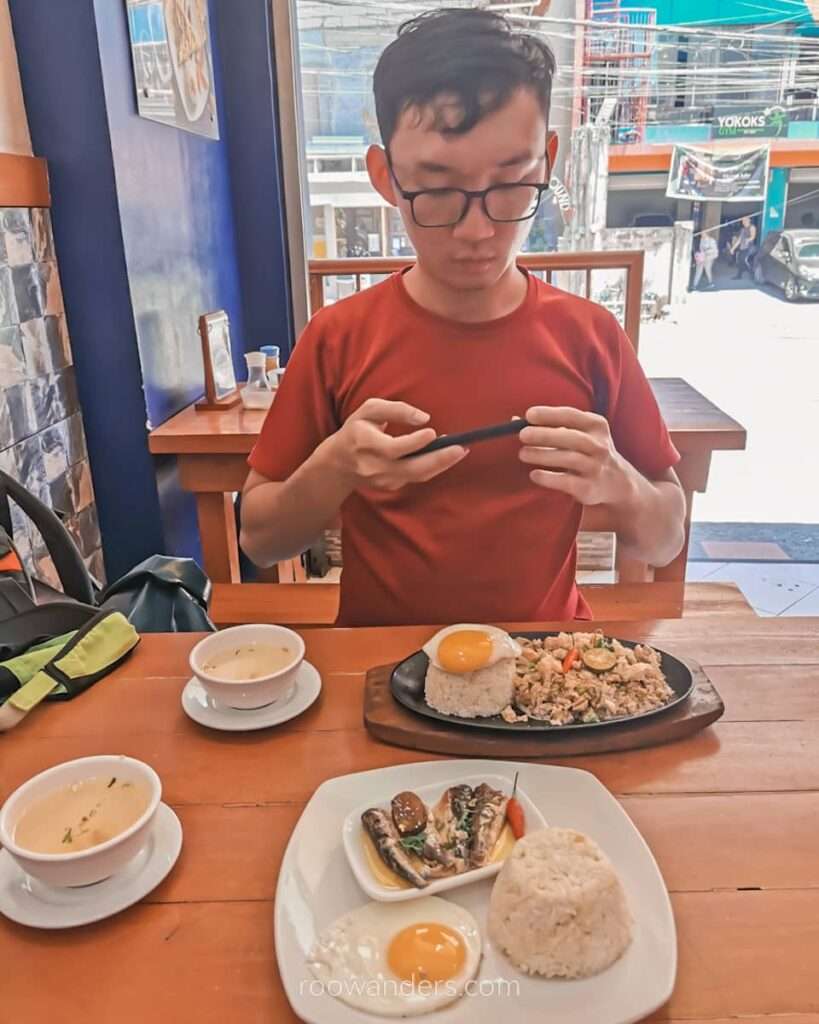
STK Ta Bay
I didn’t eat at this eatery, but know friends who went there. They serve Cebuano food like tuna panga and grilled pork belly. Location here.
Casa Verde
If you’ve had enough pork belly and lechon, head over to Casa Verde for what the store claims as ‘Home of Cebu’s Famous Brian’s Ribs’. They sell burgers and pasta too. Location here.
Accommodations
There are plenty of accommodation options to choose from in Cebu City. You could stay at the resorts of Mactan, or in the outskirts of Cebu City to escape from the hustle and bustle, dust and pollution.
We chose to stay within walking distance of the major attractions to keep our travelling time and cost down. The downside to this, however, is that delicious eateries, like the Lechon, are far away and require us to Grab a ride.
Cebu City
We stayed at Che & James Guest House located next to a university, and is under a km walk away from the Basilica. The guesthouse’s primary business is probably laundry and photocopying services. They have a female dorm on the second floor and a double room on the ground floor.
Ladies would feel very safe staying for a night or two here while transiting or travelling in Cebu City. Since I was travelling with my partner, I could bring a dude in, but we were restricted only to the ground floor.
What I like about this hostel is their free and speedy laundry service. Our double room comes with a water dispenser and is a cool respite to hide from the punishing afternoon sun of Cebu.

Backpackers still have the options of dorms at Shejoje Poshtel Hostel with its adorable capsule beds, and The Flying Fish Hostel, which has a modern-looking facade and budget double rooms.

For privacy, check out Summit Galleria, which is still centrally located.
If looking for somewhere further away from the centre, some good hotels include 4-star Seda Central Bloc at IT Park, and Radisson Blu, which has a good view of Mactan and the sea.


Mactan
Get away from the city and enjoy tranquillity by the shoreline of Mactan.
Unfortunately, to be near the beach meant to be far from budget lodging. Some of the pocket-friendly accommodations for solo travellers include the Halfway House Hostel and the Beds and Friends Hostel. Both are close to the airport.
Other luxurious resorts apart from Dusit Thani, which is at a secluded spot in Mactan, include the Crimson Resort, and Sheraton.


And if you’re a diver looking to be a hermit at a spot for some days, consider cooping at the enormous sea-facing windows of the Sugarsea Inn & Dive Shop. Location-wise, it is difficult to get there. But who cares when you’re spending the day out soaking in the sea…

Travel beyond Cebu City
Cebu City is a transit point to other places around Cebu Island.
Cross the sea on another ferry ride to Bohol for its iconic chocolate hills and alien-looking tarsiers. Bohol is another island many times bigger than Malapascua. It could take some days if you intend to cover the whole island and throw in some scuba dives. If you find planning the logistics painful, go with guided tours from Cebu. We rented a motor and travelled around Bohol.
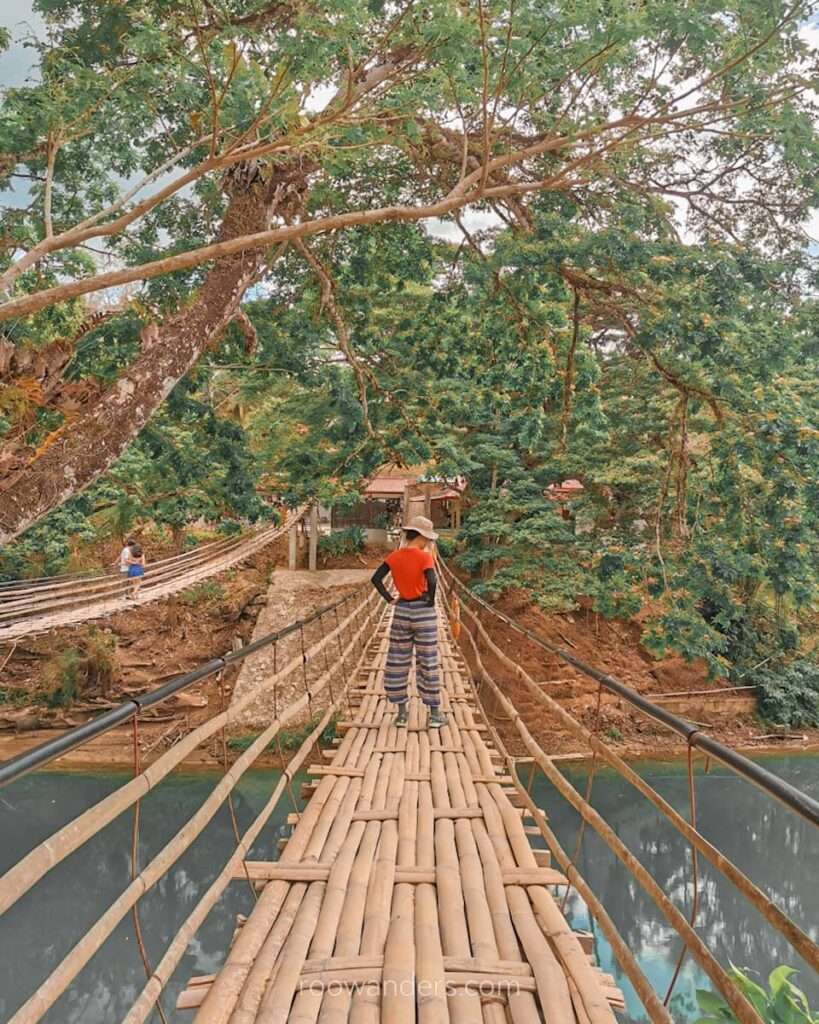
Travel south from Cebu City to Moalboal for their sardines, more scuba diving and get your adrenaline fix canyoneering at the Kawasan Falls. Moalboal – the part where tourists go – is a chic place with vegan eateries, Korean BBQs and chic cafes by the beach. You could actually squeeze the sardine run and canyoneering into one long day from Cebu City with this tour if you’re short on time and want to see and do everything.
Go all the way south of Cebu Island and catch another ferry to enchanting Siquijor Island – home of spectacular waterfalls, caves, and more snorkelling or diving.
Travel north from Cebu City to Malapascua for their rare thresher sharks and beautiful secluded white beaches. We had a wild time scuba diving and spectating three thresher sharks!
Or you could take the ferry over to other bigger adjacent islands of Cebu like Leyte and Negros Island.
Cebu has another tourist attraction in Oslob, south of Cebu City, famous for swimming with whale sharks. However, this attraction remains controversial as the whale sharks were lured to be there by food.
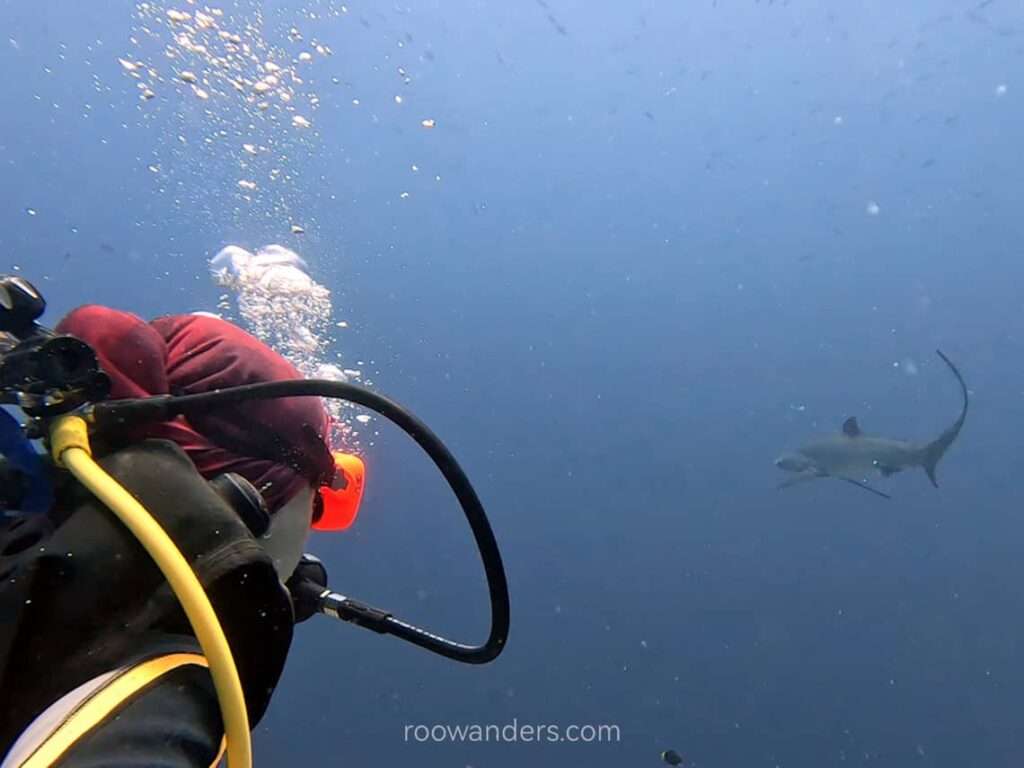
Conclusion/ Rambles
Well, I’m glad I’ve finally visited the Queen of South and explored some of the iconic attractions around Cebu Island like the thresher sharks of Malapascua and canyoneering to Kawasan Falls.
Cebu City is, like any other big city, just another transit point for me. There’s not much to comment on apart from the plethora of shops and eateries to soak up before our flight back to Singapore.
One memorable moment during our walks around Cebu City was the morning mass around the Basilica. There were lots of people! The mass is different from masses seen elsewhere – loud, and crowded yet filled with festivity.
If there’s one thing you should do in Cebu City, visit the oldest church in the Philippines. And maybe enjoy a lechon after that.






